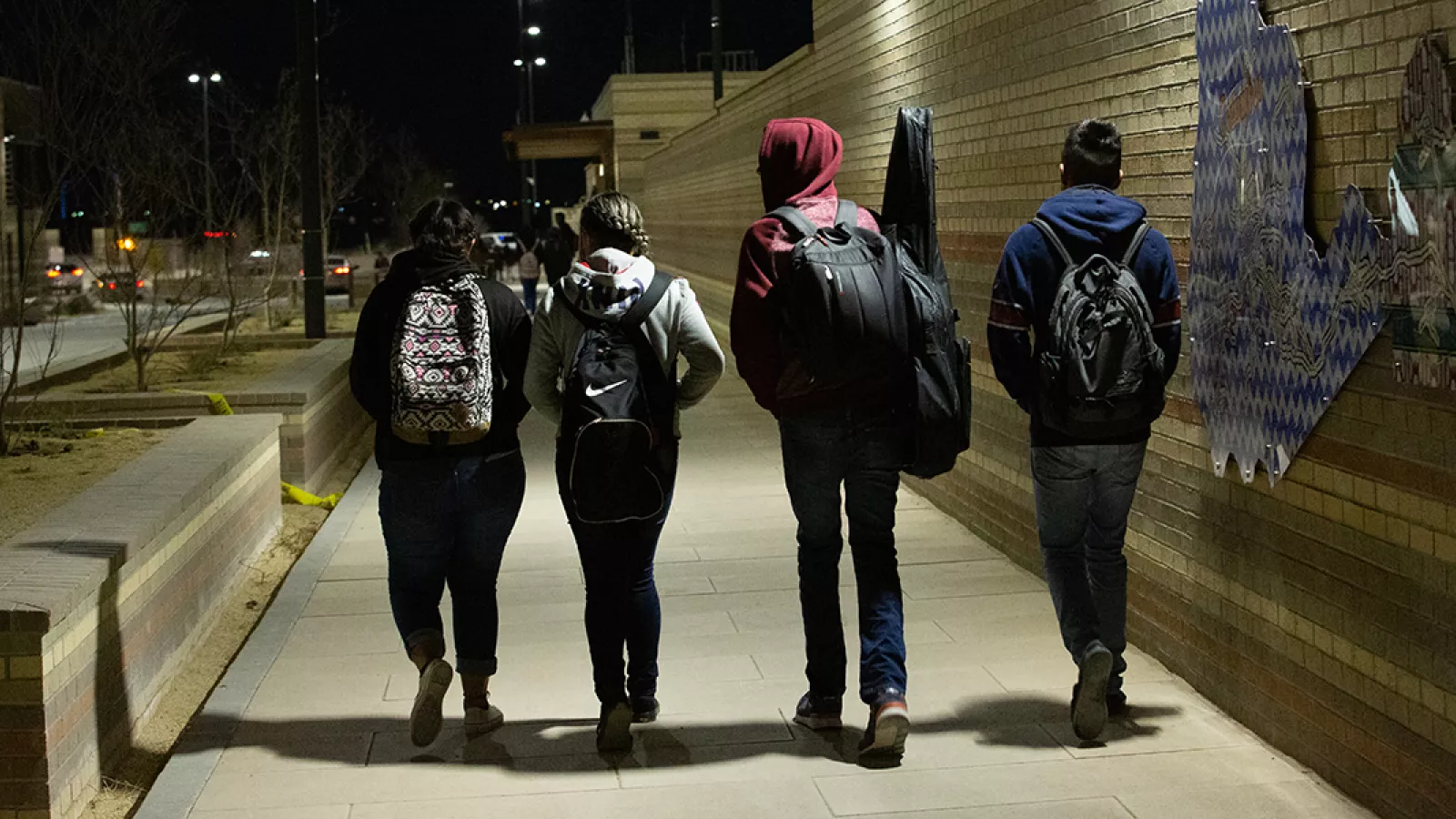Key Takeaways
- At Columbus Elementary School in Columbus, N.M., 70 percent of its 600 students live in Mexico.
- The reason these students cross the border is simple: to get a good education.
- Crossing an international border may be routine for students, but there are challenges for families and educators.
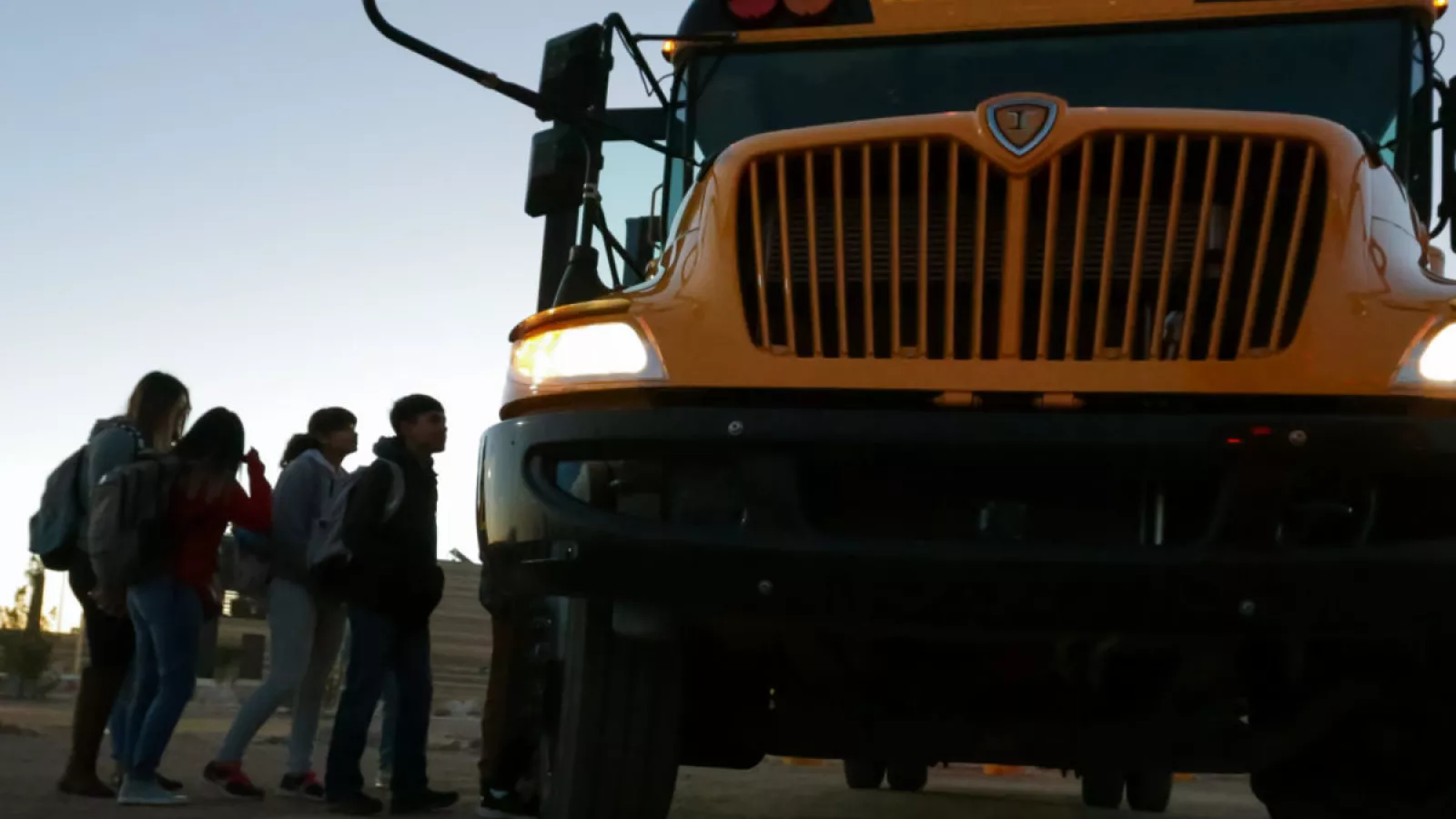
Thirty minutes before sunrise, along the border crossing between Columbus, N.M., and the village of Palomas, Mexico, a silver sparkle flashes in the night.
It’s the reflective stripe on a My Little Pony backpack.
Moments later, another twinkle. This time it’s a sequined hair bow. The child wearing it hurries to a school bus, idling nearby. Then, out of the darkness, in the 38-degree, pre-dawn chill, hundreds of children follow, in puffy coats and fleece beanies, some wearing copies of their birth certificates on cords around their necks.
From their parents’ homes in Mexico, through the newly renovated, $85 million U.S. Customs and Border Protection-Columbus Port of Entry, students walk to their school buses. From there, it’s a quick 10-minute ride to Columbus Elementary School, where 70 percent of the 600 students live in Mexico. Older students, who arrive even earlier, face a 45-minute trip to the secondary schools in Deming, N.M., about 30 miles north.
All are U.S. citizens. Today, they live across the border. In years to come, they won’t. Educating them well for that future makes sense, New Mexico educators say.
“We want these kids to get the strongest possible education we can give them,” says local teacher’s union, NEA-Deming, co-president Charity Cheung.
That includes Valeria, a Deming High School senior who plans next year to follow her older sister’s path to Doña Ana Community College in Las Cruces, N.M., about an hour east, to study architecture. And Soledad, an eleventh grader who plans to become either a surgeon like her cousin or a U.S. Marine. “I see [the Marines] helping people, and I like to help people,” she says.
To get to class by 8 a.m., a future music producer named Brigid, whose dreams do not include Palomas, Mexico, sets her alarm for 4 a.m.
“I don’t want to miss the bus!” she says.
For as long as people here can remember, children living in Palomas have gone to school in Columbus. In fact, many of the teachers working in Luna County schools today made the same journey when they were students long ago.
“Back in my day, we walked from the border to the old school. There were no buses,” recalls second-grade teacher Lourdes Espinoza, a former Palomas resident who has taught for nearly 20 years at Columbus Elementary.
But, over the decades, one thing has not changed, she says. The purpose of the cross-border trip always has been the same: “To get a good education.”
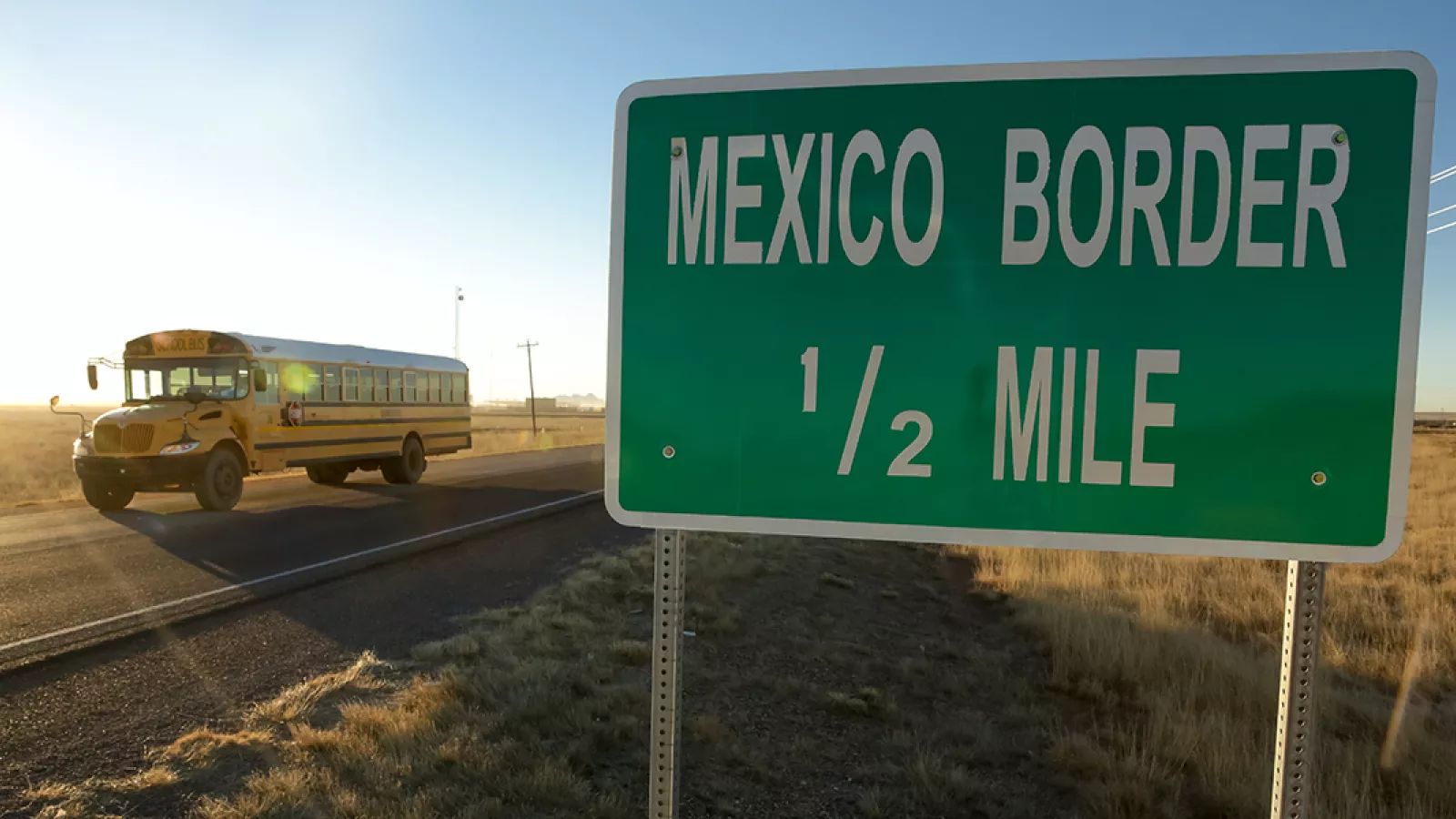
Life on the Border
The two communities flanking the border here are closely knit. Cousins here, aunts there. Or, dentist there, but hospital here.
One NEA-Deming member lives in Palomas to be near her toddler’s babysitter, she says. Others live in Columbus or Deming, but head south to buy eyeglasses. “It’s much less expensive over there!” says one teacher. And since both of Columbus’ restaurants close at 6 p.m., many dine out in Palomas—where they take their local chiles seriously.
Columbus Elementary School special education aide Xavier Muñoz grew up in Columbus with Palomas-born parents. Years ago, he worked as a U.S. Customs agent in the Columbus port. “I knew all the kids. Waved them through,” he says. “And if I saw somebody I didn’t know, I’d pull them aside and say, ‘Hey, who’s your first period teacher?’”
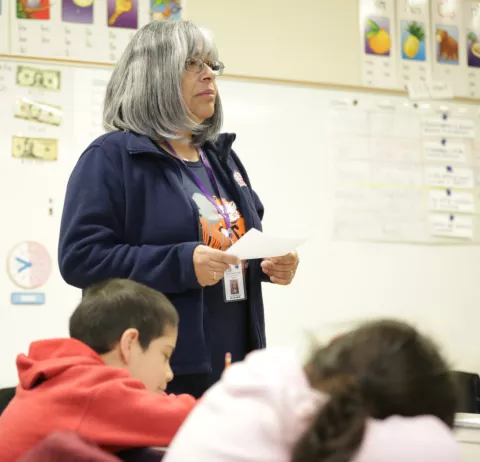
Today, the crossing takes longer. Book bags are carefully inspected, and human bodies and passports scanned with modern technologies. A few miles north of Columbus, a white blimp hangs in the sky above farmers’ onion fields and pecan groves. Owned by Border Patrol, it scans the skies for airborne drug traffickers.
Still, the idea that this gateway needs a wall, estimated by Homeland Security to cost $21.6 billion to build, or that Mexico is sending us “rapists” and “criminals,” as President Donald Trump has suggested, is laughable here. “I understand the need for a secure border,” says Muñoz. “Let’s also look at the airports and seaports, and the northern border that nobody talks about.” Here, people cross legally for work or school, or to get to their grandparents’ house for dinner on Sundays.
Two hours east, at a Starbucks in El Paso, Rebekah Bell, president of the Texas Faculty Association, scoffs at the cable-news depiction of the borderlands as dangerous or desperate. “Our biggest issue is air pollution,” she says, “from the number of cars that idle at the crossing.”
For migrants who travel to the border, it’s a different story. The Trump administration’s policies have separated children as young as 15 months old from their mothers and fathers, and NEA is fighting to end the inhumane treatment of children and families. It’s “unimaginable cruelty and inexplicable inhumanity to children,” NEA President Lily Eskelsen García has said.
A separate battle has to do with undocumented students brought to the U.S. as children, commonly known as Dreamers, whose protections from deportation were revoked by the Trump administration.
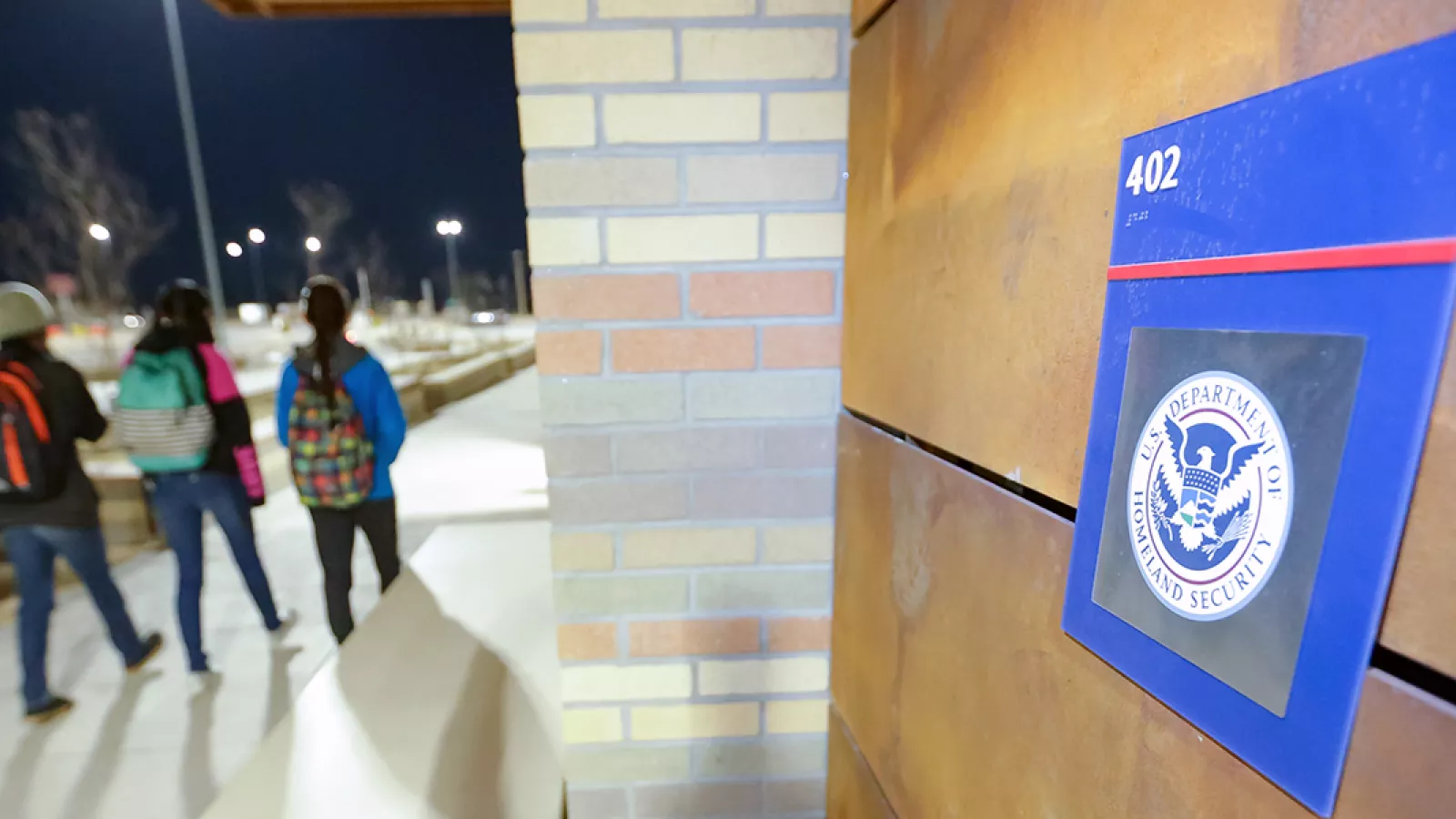
Yes, It's Legal
People often ask, is it legal for students who live in Palomas to attend New Mexico public schools? New Mexico’s state constitution mandates public schools be free and open to all children in the state, and state law specifies students “have a right to attend public school within the school district in which he resides or is present.”
“They all want a better life,” says Deming High School teacher Lourdes Huerta. “I really do give them credit. Because they want this.”
Those last two words, “is present,” are key. They make New Mexico more welcoming than, say, Texas or California, where educators believe many hundreds of students cross daily from Juárez to El Paso, or Tijuana to San Ysidro, Calif., but do so covertly, or pay hefty tuition.
By contrast, “I’m here to educate everybody at my door,” says Armando Chavez, principal of Columbus Elementary School, the school he calls a “diamond in the desert.”
“You bring them to me, and I’ll educate them.”
So, yes, it’s legal. Practical, too, says Chavez. Keep in mind these students are citizens. Some were born in Deming’s hospital—the closest Mexican hospital is two hours away—while others lived for years in far-flung states, including Iowa, South Dakota, “even Connecticut,” says a Columbus educator.
Brigid, the future music producer, lived in Phoenix until age 9, when her parents went home to visit her grandparents and got stuck. Decades of experience have shown Chavez and his colleagues that Brigid and her U.S.-born classmates all will return to live and work on this side of the border.
“I’ve hired some as teachers!” he says.
The bottom line is this: “They are our future. We are their stepping stone,” he says. “In my opinion, what we’re doing here, giving them a good education, is an investment in our country.”
Consider Diego, a shy Columbus fifth grader who lives in Palomas with his three brothers, all U.S. citizens. His favorite subject at school is reading. (Current book: a biography of Martin Luther King, Jr.) When he grows up, he wants to enlist and wear a U.S. Army uniform.
“Soldiers,” says Espinoza, the second-grade teacher. “All my boys say they want to be soldiers! And all of my girls say they want to be teachers.”
Whatever he does, says Diego’s mother, Mary Aguirre—it’ll be after he goes to college.
They Want This
Crossing an international border may be routine for students like Diego, who looks perplexed when asked if it’s ever scary. “Um, no,” he says.
But that doesn’t make it easy. There are challenges for students, parents, and educators.
How do you handle a parent-teacher conference when your student’s parents can’t cross the border? This is reality for parents who were deported.
Espinoza has grown accustomed to Skype conferences. Every year, Columbus Elementary administrators rent a room in a Palomas restaurant, equip it with a computer hookup, and parents are assigned 10- or 15-minute slots to sit down and connect virtually with teachers.
He also makes calls. “Just the other day, I called a parent because I had a student who didn’t want to participate,” she says. “It was very effective! Today, he brought all of his books and homework.”
At Deming High School, teacher Lourdes Huerta gives extra credit to her English-language students who come to class with their parents’ questions or comments, and she relies on the phone, too. “I’ll tell you this much, if a kid acts up and I make a call—their parent will respond!” For parents of graduating seniors who can’t attend graduation, the high school shares video recordings.
Another issue: Sometimes students get sick at school. If they live in Palomas, it’s no simple matter to call their parents and get them picked up. Muñoz is one of two Columbus Elementary School employees who are licensed to transport students. He’ll walk them through the port of entry to meet their parents.
And then there’s the broken Internet connections, which are commonplace in Mexico and can derail students’ ability to complete their homework and research projects, plus the sheer exhaustion in a daily trek that starts for some students at 4 a.m.
“I ask my kids why they make the effort. What’s the value of getting an education in the U.S.? Because it’s not easy for them,” says Huerta. “One girl told me she doesn’t want to have to sell tamales like her mother. She wants a better life. They all want a better life.”
They deserve a lot of credit, she says. “They’re raised to earn what they get, and they work hard,” says Huerta. “I really do give them credit. Because they want this.”
Get more from


